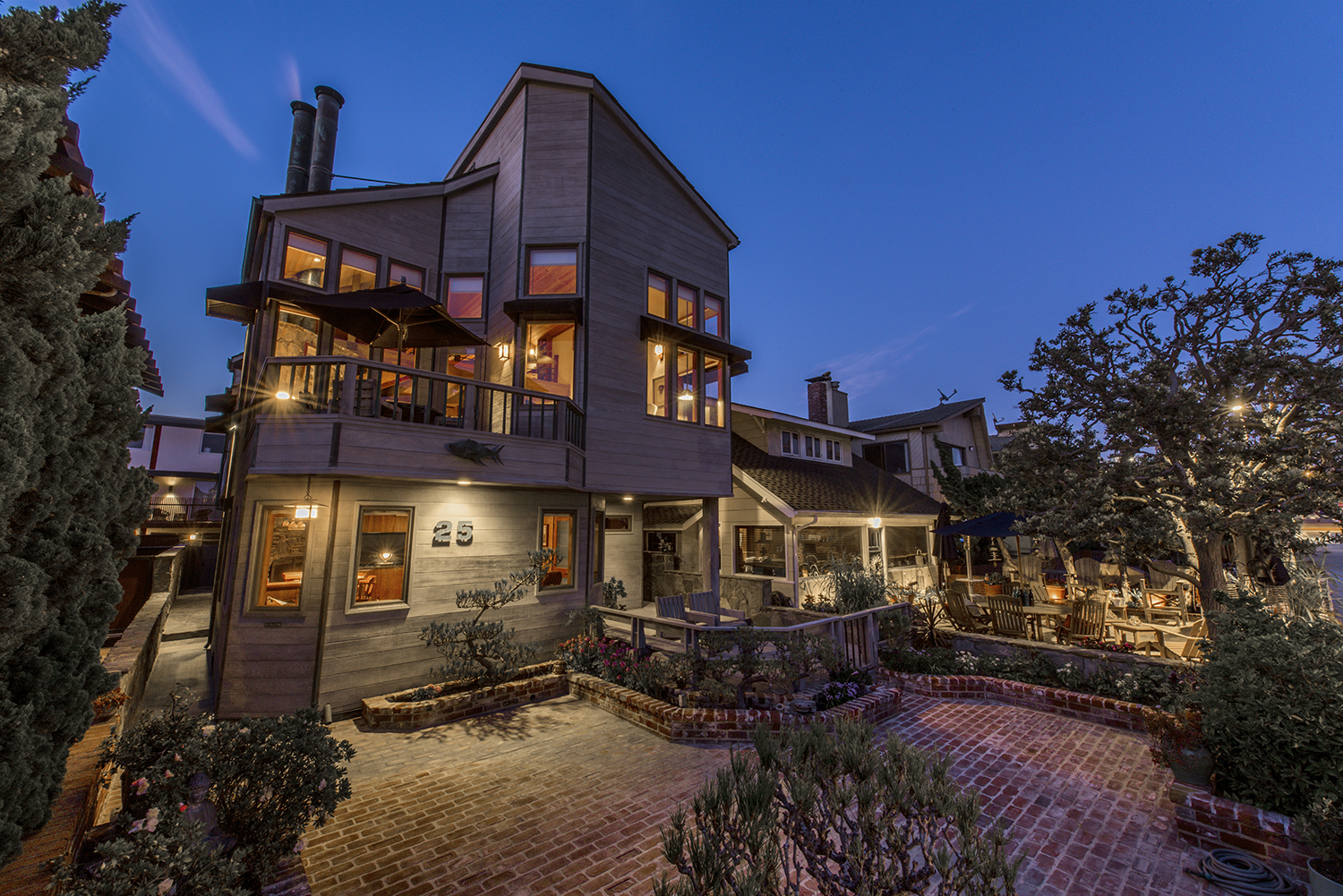
A handpsun, Craftsman-inspired home on a mellow walk street embodies the best of classic South Bay
Back in the 1980s, whenever Susan and John McFarlane came across an interesting home or a beautiful room, they would save an image of it and place it in a file. Soon, the file was bulging with clippings and photos; not long after, Susan figured it was time for she and her lifeguard captain husband to make their move. The duo set to work with a band of local craftsmen and a South Bay architect, Donald Lee Hovis, who, like John, attended Redondo Union High School.
By 1992, the McFarlane’s had capped off the finishing touches on their dream home— a Modern Eclectic home heavy with Craftsman influences, a stone’s throw from the sand on one of Hermosa Beach’s most coveted walk streets—where the two would idyllically dwell for the next couple of decades.
“We took our dream ideas, and to see them come true is one of the most exciting things about this house,” says Susan. The home’s exterior, tall and slender and clad in redwood, with two green-patina pipes extending from its roofline, is eye-catching all right; but then you open the door and step into a warm, textured atmosphere—one of mellow woods, meticulously hand spun details and a three-story floor plan of pure geometry, with angular, open floors stretching upward.
“Nothing came stock from anywhere,” says Susan with a chuckle. Among the standout details are hearty lodge fireplaces and tasteful brick details constructed of salvaged bricks from the Lincoln Building, a now-extinct wing of Redondo Union High School. Select rooms are constructed from architectural-grade Clear redwood (“Almost impossible to get anymore,” Susan points out). There are big wood beams with exposed fasteners stretched across the ceiling. Nearly every door is handmade and fitted with handrails constructed from copper pipes, hand-distressed to a green patina by John.
The home’s Arts & Craft lighting is from Arroyo Craftsman, a firm that reproduces fixtures found in some of the movement’s most famous homes, including those designed by Southern California’s famed Greene brothers, whose aesthetics very much influenced the McFarlane’s. “When the Greene brothers did houses in Pasadena,” remarks Susan, “they would look at a piece of wood and see a picture in it. They were always looking at the wood as if it was alive.”
THE SUNNY SIDE OF THE STREET
Of note is the bounty of slender windows that bring in soft light throughout the day, and the home’s spacious patio and decks, situated to make the most of the shifting sunlight. “The light rotates along the home,” explains Susan, who goes on to describe how she and John enjoy breakfast on the deck that faces the walk street, “and by the time it’s evening we’re sitting in the back sipping a little margarita and talking about our day.”
“The home speaks to you through the warmth of the wood, the openness of the public spaces and the high-vaulted ceilings,” says the home’s realtor Barry Host. “It wraps itself around a quality of life.”
Adds John, “It’s constant beauty. The calm days, the stormy days—it’s just like you’re living at a constant event. And it pulls you into staying active.” It’s compelling testimony from the veteran waterman whose sharp blue eyes and energetic demeanor belie his years. His life on the water is documented by captivating black-and-white surfing and lifeguarding photos from the 1940s and 1950s that line the walls, and in the foyer there’s a small bronze statue that stands as part of his Lifeguard Lifetime Achievement Award. (John is also a member of the Hermosa Beach Surfer’s Walk of Fame.)
“When I was very young, Hermosa Beach was a little Beatnik place,” recalls Susan. “It’s always been a very open place, and that has not changed.” It’s the presence of this spirit, impossible to fabricate, that pervades this very special walk-street home, a place spun from years of loving effort on the part of its owners and, by extension, members of the community. When asked of her feelings about moving on from the home, Susan says slowly, “I look at it with fondness and nostalgia. Whoever gets the house will come in and have a similar feeling. They’ll really enjoy being here. They’ll understand.
Photography by Adam Wilson